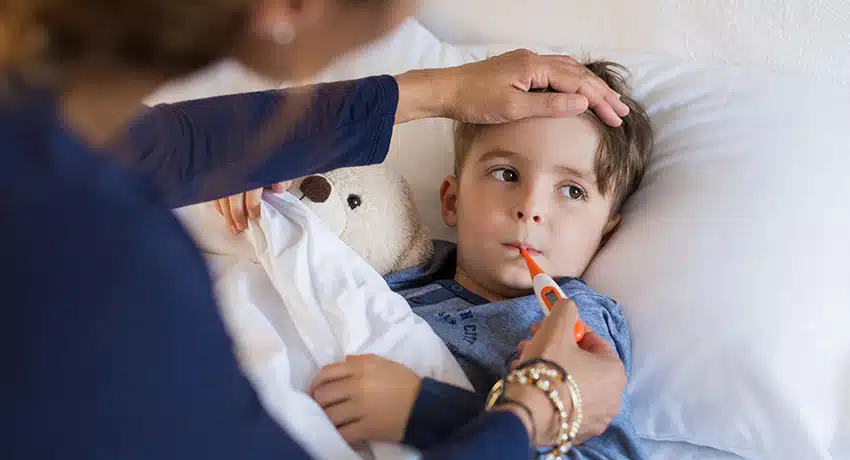Fevers are common in children, especially during winter when viruses like colds, flu, and respiratory infections are more prevalent. While a fever can be a natural response to fighting infection, it’s important to monitor it closely in children to ensure they remain comfortable and safe. Here’s why keeping an eye on fevers is so essential during the colder months and what to watch for to help your child recover quickly.
1. Understanding What a Fever Means
A fever is the body’s way of responding to an infection, helping to fight off viruses and bacteria:
- Immune System Response: Fevers are typically a sign that the immune system is working to protect the body.
- Temperature Guidelines: In children, a fever is usually considered any temperature over 100.4°F (38°C).
- Common with Winter Illnesses: Colds, flu, and other seasonal viruses often bring fevers, especially in younger children who are building their immunity.
Understanding that fever is a normal response can reassure parents, but monitoring helps in managing any potential complications.
2. Why Monitoring Fevers is Key in Winter
Winter illnesses can vary in severity, and keeping track of a fever’s progression can help you detect when your child might need additional care:
- Detecting Changes: A persistent or rising fever may indicate that a viral infection is becoming more severe or that a secondary bacterial infection has developed.
- Guiding Treatment: Monitoring the fever can help determine if over-the-counter medication or other home care measures are needed.
- Spotting Complications Early: Certain winter illnesses, like the flu or RSV, can sometimes lead to more serious symptoms. Tracking fever trends allows parents to act early if necessary.
Consistent monitoring lets parents respond quickly to changes, helping keep children safe and comfortable as they recover.
3. How to Monitor Fevers Effectively
Keeping a close eye on a child’s fever doesn’t have to be complicated. Here are some simple ways to stay on top of their temperature:
- Use a Reliable Thermometer: Digital thermometers are accurate and easy to use. Ear or forehead thermometers can also be convenient, especially for young children.
- Check Temperature Regularly: Taking temperature readings every few hours helps track changes, especially if the fever persists over several days.
- Record Symptoms Alongside the Fever: Take note of other symptoms like cough, sore throat, or fatigue, as these can help give a fuller picture of your child’s condition.
These simple steps allow you to stay informed about your child’s health and make informed decisions as their symptoms evolve.
4. When to Seek Medical Attention for a Fever
While most fevers in children can be managed at home, some signs indicate it’s time to consult a healthcare provider:
- High Fever: A temperature over 104°F (40°C) may need immediate attention, especially in younger children.
- Fever Lasting More Than Three Days: If the fever doesn’t improve or returns after going down, it may indicate an infection that needs treatment.
- Other Concerning Symptoms: Difficulty breathing, rash, or extreme irritability can suggest that the underlying illness is more serious.
Knowing these signs ensures parents can seek help promptly if their child’s condition worsens.
5. Tips for Comforting a Child with a Fever
A few at-home measures can help ease discomfort and make the recovery process smoother:
- Stay Hydrated: Offer water, diluted juice, or broth to keep your child hydrated, as fevers can cause fluid loss.
- Keep the Room Cool: A comfortably cool room can prevent overheating and keep your child at ease.
- Offer Light, Loose Clothing: Loose clothing helps regulate body temperature without causing chills or discomfort.
- Use Fever-Reducing Medications if Needed: Acetaminophen or ibuprofen can be given based on your child’s age and weight, but only as directed.
These simple methods make a big difference in helping children feel more comfortable and easing the effects of a fever.
Final Thoughts
While fevers are common in children during winter, monitoring them closely is essential to ensure they recover safely. By tracking temperature changes, recognizing when to seek medical advice, and providing supportive care, parents can help their child through winter illnesses with confidence.

